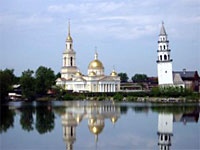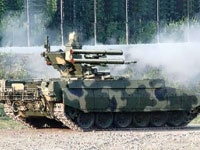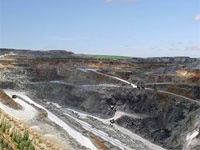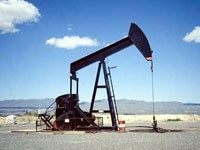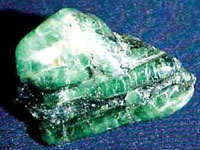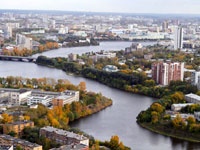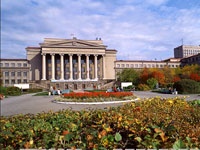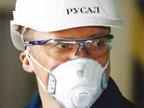 |
Home page / Regions
/ The Urals Federal District
/ The Sverdlovsk Oblast
/ Social and natural resources
|
|
|
Social and natural resourcesHistory and culture Russian merchants began to exploit the Urals and the territory of the present day Sverdlovsk Oblast as long ago as XI century. In 1598 the first town - Verkhoturye - was founded here to become the capital of the Urals. The industrial development of the region has begun at the end of the XVII century and is associated with the names of Peter the Great and the Demidovs, a family of mining industrialists. During the XVIII-XIX centuries the Urals region was the main source of metallurgical products in Russia.
Furthermore the XIX century saw the development of machine building and new types of industry: electric power generation, timber processing, and food industry. Most of these industries still play a key role in the economy of the region. The Sverdlovsk Oblast today is not only a large industrial but a cultural centre of Russia. In the Oblast there are 30 theatres (opera and ballet, drama, musical comedy, puppet theatres and etc.), 11 concert organizations, 108 state-owned and municipal museums, a circus, a zoo, aquaparks, and art galleries. The Sverdlovsk Oblast has become a venue for various prestigious international, national, and regional festivals, conferences and exhibitions.
Natural resources Vast mineral resources of the Sverdlovsk Oblast include:
The region accounts for 97% of vanadium production, 70% of bauxites, 61% of chrysolite asbestos and 25% of iron ores and 22% of refractory clays in Russia's total industrial output.
On the territory of the Sverdlovsk Oblast we find the main raw material base for the aluminium industry and the only region in the Russian Federation where high quality bauxites are produced. The bauxites are of the key commercial value; their quality is recognised both in Russia and the CIS countries. Nonferrous metallurgy raw materials are also of significance here. Taking into account the current production rate, iron ore deposits of 7.9 billion tons will last for decades satisfying the demand of metallurgical companies. The Urals region is the world's leader in asbestos production accounting for 25% of the world output; this fulfils the demand of the Urals economic area, the CIS countries, Russia, as well as being exported further abroad to countries outside the CIS.
The Sverdlovsk Oblast is the oldest gold and platinum mining region in Russia. There are 6 gold ore fields and 185 gold placers, a complex platinoid ores field and 73 complex gold-platinum placers on territory of the Oblast. Among non-metallic minerals we should mention the Urals marble that comes in 40-60 various colours. The 26 explored fields provide for 15% of the Russian marble production.
Inexhaustible deposits of limestone and clay, sand and gravel, decorative and building stone, and other minerals are used for the production of construction materials.
Population and labour resources Almost 83% of the population live in the cities, towns, and urban type communities. The population of Ekaterinburg exceeds one million; other large cities of the Oblast are Nizhniy Tagil, Kamensk-Uralskiy, and Pervouralsk. Available labour resources of the Sverdlovsk Oblast amount to 2.38 million people.
Science The Sverdlovsk Oblast ranks among the leading regions of Russia in terms of research potential. Nearly 1000 doctors and 5000 candidates to doctors of sciences work in the science and research sphere. The Urals Branch of the Russian Academy of Sciences includes 22 academic research institutes. The main research areas include:
In Ekaterinburg there are 100 applied science organizations (industry sector project bureaus, design, research, and development institutes) and 43 higher education establishments (state-owned and commercial).
|
|
| Regions | Project participants | Investment projects | Consulates and Trade Offices | News and Analysis | About the Project |
|
© RusBusinessNews, 2009. All rights reserved. Establishing a hyperlink to RIA RusBusinessNews is required for using any of the material published on this website. News and analytical reviews are translated into foreign languages by the TRANSLIT Translation Agency |
«Sum of technologies»® Web design Site promotion |
